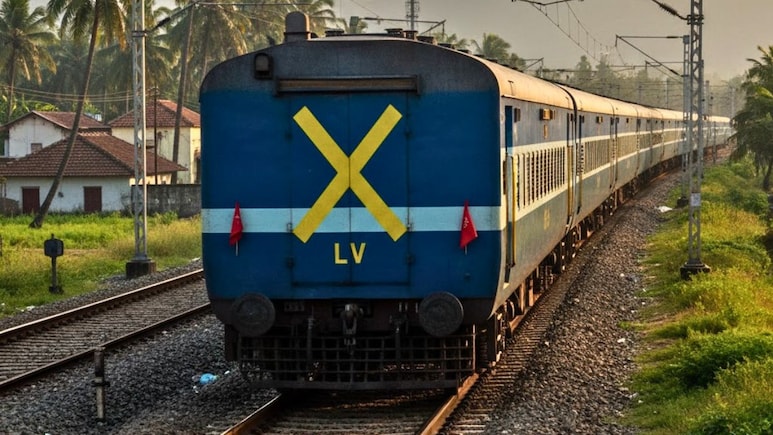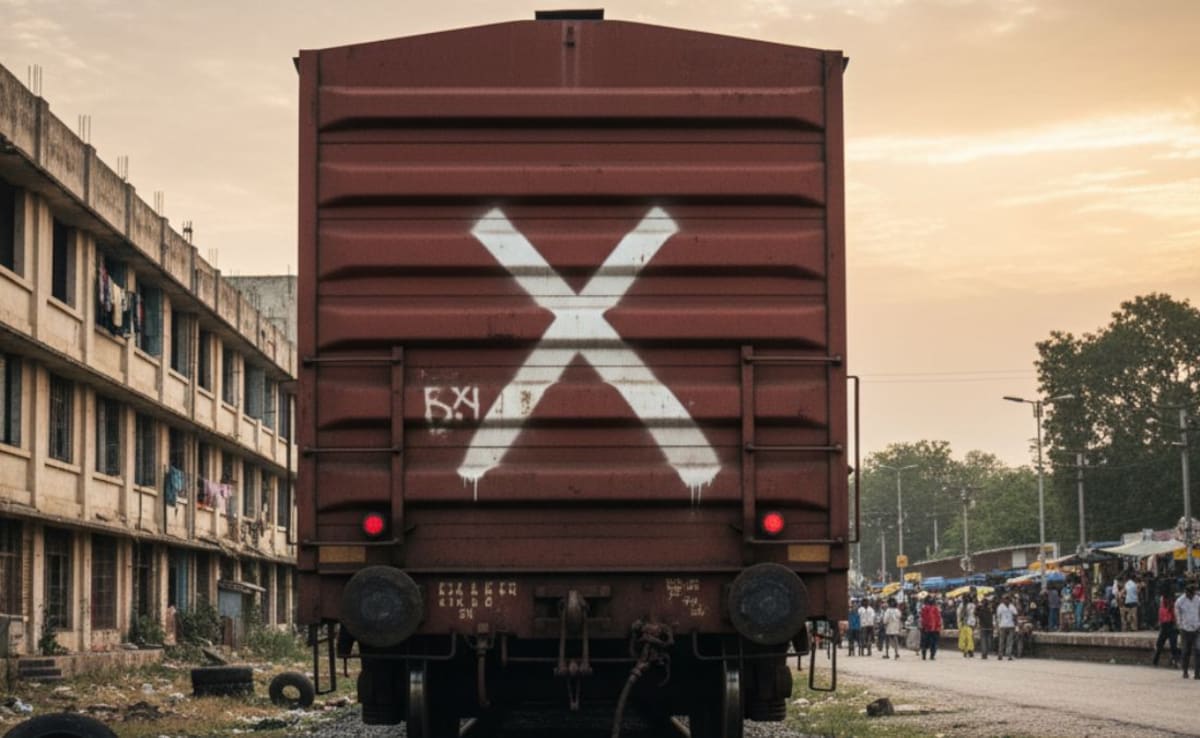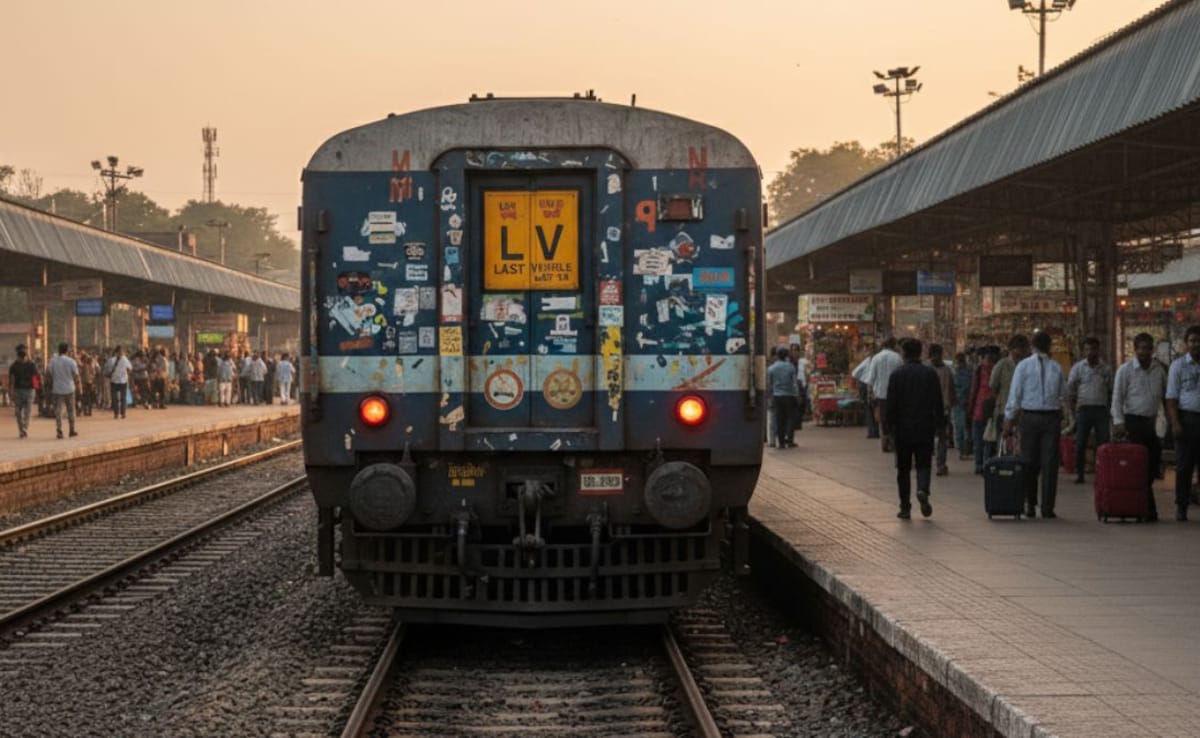
Railways still remain one of the most used modes of transportation in India. It is easy, convenient and has amazing connectivity across the country. Indian Railways, with its vast network and intricate operations, often leaves passengers curious about various symbols and markings on trains. One such popular and well-known mark is the bold "X" painted on the last coach. At first glance, it might seem like a mere design choice or an arbitrary symbol. However, this "X" serves multiple important purposes in ensuring the safety and efficiency of train operations. So, if you are curious about this sign, let's learn what it actually means and its importance in railway safety.
Also Read: How To Get Free Hotel Room Upgrades Without Paying Extra
Here Are The Reasons Why Indian Trains Have An ‘X' Mark On The Last Coach

X Mark On Train. (Photo: Representative Picture)
1. Confirmation That The Train Has Passed Completely
The primary purpose of the “X” mark on the last coach is to confirm that the entire train has passed through a station without any coaches left behind. This marking acts as a visual cue for railway officials, ensuring that all coaches have cleared the station area. It's particularly vital during night operations or in areas with low visibility, where relying solely on signals might not be sufficient. The "X" provides an additional layer of assurance that the train has passed in its entirety.
2. Helpful In Emergency Situations
In the rare event of a coach detaching from the train, the absence of the “X” on the last coach serves as an immediate indicator of an emergency situation. Railway authorities can quickly identify that the train has not passed completely, prompting immediate action to locate and address the issue. This practice helps in preventing potential accidents and ensures the safety of the passengers and railway staff alike.
“X” Is Not The Only Indicator

Photo: Representative Picture
While the "X" is the primary indicator, it is often accompanied by other markings to enhance visibility and clarity. The "LV" (Last Vehicle) board is typically displayed on the last coach during the day, indicating that it is the final coach in the train formation. At night, a blinking red tail lamp is attached to the last coach to provide confirmation that the train has passed when the "X" might not be clearly visible. These complementary markings work together to ensure the train's complete passage is acknowledged.
Reflective Paint for Enhanced Visibility
To ensure that the "X" is visible under various lighting conditions, especially during nighttime or in foggy weather, railway authorities use reflective or radium paint. This reflective coating enhances the visibility of the "X," making it easily noticeable to railway officials and station masters. The use of such materials helps support the importance of this marking and maintaining operational safety efficiently.
Do All Trains Around The World Have An “X” Mark?
The requirement to confirm a train's completeness, known as End-of-Train (EOT) indication, is the foundation pillar of global railway safety. Railways worldwide adopt different solutions for EOT, based on operational needs, technological investment, and network density. The primary methods fall into two categories: visual/passive and electronic/active.
1. Electronic End-of-Train Devices (EOTDs)

Photo: Unsplash
In North America (U.S. and Canada), freight trains predominantly use EOTDs, sometimes called FREDs (Flashing Rear End Devices). These devices monitor brake pipe pressure, transmit data on the rear car's status to the train, and feature a highly visible flashing light.
2. Integrated Signalling Systems (Europe)
Many high-speed European networks rely heavily on advanced technologies like Axle Counters and the European Train Control System (ETCS). Axle counters electronically track every wheelset entering and leaving a block, making a physical EOT marker less critical for main line verification.
3. Standard Flags and Discs
Historically and in many developing nations, simple, portable end-of-train markers, ranging from specific-colored flags in daylight to designated circular discs or lamps at night, are still used. These are non-powered, fail-safe visual cues, similar in principle to the Indian 'X.'
Also Read: 7 Common Mistakes That Can Get Your Boarding Denied At The Gate
So, now you know what the “X” sign behind the last train coach means. So, go on, share this fun fact with your friends and family.
Track Latest News Live on NDTV.com and get news updates from India and around the world

